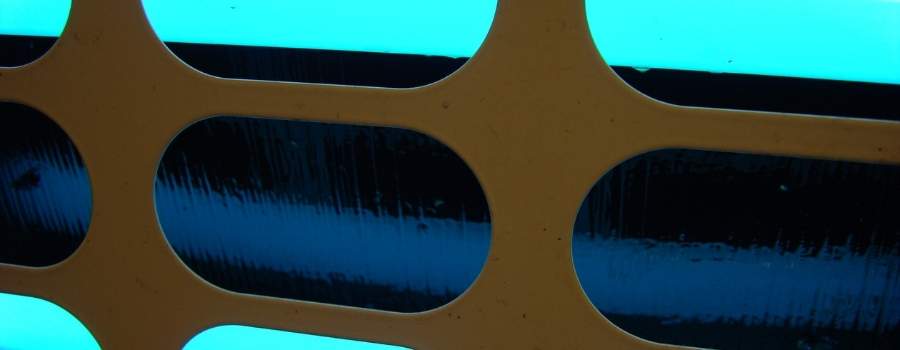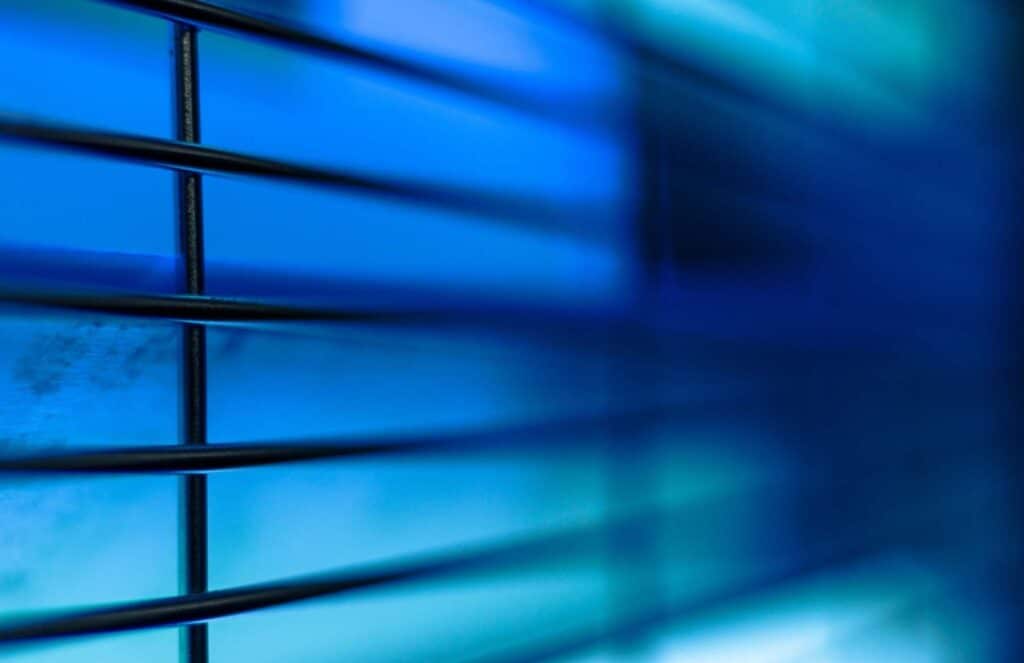
The more time I spend outside, which is more and more now that I live in the Dallas area, the more I want to take advantage of the year ’round warm temperatures and the ever present sun. One simple outdoor tool that can make backyard living more comfortable is a bug zapper, especially one that takes advantage of solar power.
Solar-powered bug zappers are as efficient as their electricity or battery-operated counterparts. They charge during the day and will last all night attracting insects with ultraviolet bulbs, eliminating flies, mosquitos, and other insects.
Solar-powered bug zappers will work to eliminate pesky insects from your next gathering. With very little effort, you can keep them charged and get the most out of them and even find ways to only eliminate the insects you want to eliminate.
How Well do they Work
On Average, with a good charge and strategic location, a solar powered bug zapper will work just as well as a standard plug-in model. You will want to position your solar bug zapper in an area that gets plenty of sun during the day, but is fairly dark at night to maximize the number of insects attracted to it.
A standard bug zapper is a pretty simple device. It’s just some batteries or wire leading to a power source attached to some ultraviolet bulbs. The casing is only there to keep people or animals from accidentally touching it.
It takes very little current, or amperage to kill a mosquito so models that charge a few batteries provide more than enough punch to eliminate them.
Charge Time
While the initial charge time can take a while, like 6 – 10 hours to go from zero charge to full, future charging should take less time since you’ll usually have some juice leftover after each use.
You may need to adjust the angle of the solar panel throughout the day to ensure it gets the most direct sunlight, but even a zapper not aimed directly at the sun will draw power, just not as efficiently.
How Long Will it Work?
Most models will work for 12 hours or more with a fully charged battery, which should get you through several evening’s worth of outdoor living. Some higher-end models have automatic turn-on/off that activates when the sun goes down or comes back up, making these models even more efficient.
Solar powered bug zappers are just as easy to install as standard zappers. Most models hang from a wire while some attach to the ground with a steak, similar to path and garden lights. In fact, most of these types of zappers also have a white light mode, which is an LED light intended for lighting rather than bug zapping.
In addition to solar powered bug zappers making great additions to your backyard, they are ideal for camping and hiking!
They are small, lightweight, and solar power means you don’t have to bring extra batteries or some sort of power source…however, most do have USB charge ports for quicker charging.
Will it Work at Night
Solar powered bug zappers will work great at night since they use the sun to charge a battery located inside. Even models with low usage time work at least 6 hours after charging while other models that use less power-hungry white light that can last for up to 20 hours.
These longer-lasting models will usually switch over to ultraviolet light once the sun goes down. It should be noted that the white light mode on zappers is intended for illumination only and likely won’t attract and kill insects, it’s the ultraviolet mode that draws insects towards their zappy doom.

How do Solar Powered Bug Zappers Work?
Solar powered bug zappers work by utilizing ultraviolet (UV) light to attract insects. The zapper has a solar panel that absorbs sunlight and converts it into electrical energy, which is stored in a built-in rechargeable battery. At night, the bug zapper will activate its UV light source, luring insects towards it.
Once the insects are drawn to the UV light emitted by the solar powered bug zapper, they come into contact with an electrified grid or a high-voltage metal plate.
When the insects make contact with this grid or plate, they receive a lethal electric shock, effectively eliminating them. Some solar powered bug zappers also employ a fan or suction mechanism to further enhance the effectiveness by pulling the insects towards the electric grid or plate.
Solar powered bug zappers are designed to be environmentally friendly and energy-efficient. Since they rely on solar power, they do not require any external power source or electrical connections, making them convenient to use in outdoor spaces.
The solar panel charges the battery during the day, ensuring that the bug zapper continues to operate throughout the night.
Additionally, solar powered bug zappers often feature a weather-resistant construction, enabling them to withstand various outdoor conditions.
While solar powered bug zappers can effectively attract and eliminate insects, their effectiveness may vary depending on factors such as the size of the device, the strength of the UV light, and the specific types of insects present in the area.
They are generally more suitable for controlling flying insects such as mosquitoes, flies, and moths. To optimize their performance, it is recommended to place bug zappers in areas away from human activity and sources of competing light, ensuring that they can attract insects effectively.
How To Make Your Solar Powered Bug Zapper More Efficient
Over time, you may notice that your solar powered bug zapper may start to keep fewer and fewer insects away…this could be due to a loss in efficiency. Luckily, there are a few, simple things you can do to get that efficiency back to normal:
- Get As Much Direct Sunlight As Possible
- Consider Moving Your Zapper Around To Get The Best Daylight Sun
- Utilize USB Or Power Plugs To Speed Up Charging
- Keep The Solar Lense Clean
- Make Sure You’re Using Enough Zappers To Cover Your Yards Size
Make sure that your zapper gets most of its direct sunlight during the morning to early afternoon hours. Direct sunlight will give your zapper the most charge and keep it shining bright well into the night.
Getting the most sunlight probably means moving your zapper around during the day. Remembering to put your zapper in one place in the morning and then move it to where you and your family hang out in the evening can be a hassle. In this case, you might want to opt for a model that has a second way to charge it.
Many models come with a USB port, allowing you to plug it directly into your computer or charge station, getting it up and running a lot more quickly than letting it sit in sunlight all day. This is also a necessity if you live in a place that is overcast a lot, especially if it’s overcast a lot of mornings.
Keep the solar lenses clean. With the amount of time it takes to charge a solar powered bug zapper, you want as many of these precious sun rays hitting the panel as possible.
A device with a dirty solar panel can lose as much as 35 – 50% of its efficiency compared to a device with a clean solar panel, depending on the amount of gunk on there.
If you have a particularly large yard and have people mingling all over, then you may want to invest in a few of these. The high-end catching range for a solar powered bug zapper will be around 80 square feet. This is perfect for an outdoor meal or sitting around a fire pit, but with people spread all over you’ll likely need a few to keep everyone bug free.
Do Solar Powered Bug Zappers Kill Insects Other Than Flies And Mosquitos?
Bug zappers are designed to eliminate flies and mosquitos, but the University of Delaware did a study and found that less than 1% of insects collected from 6 zappers were nonbiting insects. Worse yet, if bees or pollinating insects are being killed, it could have an impact on plant life in your area.
I think a bug zapper is a perfectly fine tool to keep your backyard pest-free, but I would caution against keeping it on all night. Many models have an off switch that you can hit before you head in for the evening. In addition to saving a few bees’ lives, this will also keep some power stored in the batteries for your next outdoor event…great for when you forget to set it in the right place to charge!
Most models are designed to hang up around head height since they are designed to eliminate flying pests, but some models aren’t equipped with a hanger. These models just sit wherever you happen to put them down, and if that happens to be on the ground then other, curious animals could be attracted to them.
In these cases, I would either find a way to hang them, maybe with a piece of twine to picture frame wire, or set them on a ledge that is about head height and not easily accessible for critters that aren’t meant to be disposed of by it. And again, if it has an “off-switch,” turn it off or pull the battery.
How Does a Solar Powered Bug Zapper Compare to a Standard Bug Zapper?
In general, a standard bug zapper requires a direct electrical connection to operate, either through a power outlet or batteries while solar powered bug zappers rely on solar energy, utilizing a built-in solar panel to capture sunlight and convert it into electrical power.
This makes solar powered bug zappers more environmentally friendly and eliminates the need for external power sources or frequent battery replacements.
Placement and Portability
Standard bug zappers are often designed for fixed installation and require a stable mounting location near an electrical outlet.
In contrast, solar powered bug zappers are more flexible and portable since they don’t rely on electrical connections. They can be easily moved and placed in various outdoor areas without the constraint of proximity to a power source.
Operation
Both types of bug zappers employ ultraviolet (UV) light to attract insects. However, the strength of the UV light emitted by solar powered bug zappers may vary compared to standard ones. Some standard bug zappers may have more powerful UV bulbs, which can attract insects from a greater distance.
Maintenance and Upkeep
Standard bug zappers may require periodic bulb replacements and battery changes, while solar powered bug zappers generally have long-lasting LED bulbs and rechargeable batteries that can be replenished by sunlight. This reduces the maintenance effort and cost associated with the device.
Effectiveness
Whether solar powered or standard, effectiveness can be influenced by factors such as the specific insect species in the area, the location of the bug zapper, and the presence of competing light sources.
It’s recommended to position your solar powered bug zappers away from human activity and areas with other light sources to optimize their performance in attracting and eliminating insects.
| Aspect | Solar Powered Bug Zapper | Standard Bug Zapper |
|---|---|---|
| Power Source | Solar energy | Direct electrical connection (power outlet or battery) |
| Placement and Portability | Flexible and portable | Fixed installation near an electrical outlet |
| UV Light Strength | Varies | Potentially more powerful bulbs for greater attraction |
| Maintenance | Long-lasting LED bulbs, rechargeable batteries | Bulb replacements, battery changes |
| Environmental Impact | Environmentally friendly | Requires electrical connection |
It’s important to note that effectiveness can vary based on factors like insect species and positioning of the bug zapper.
